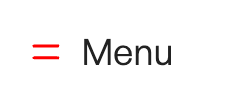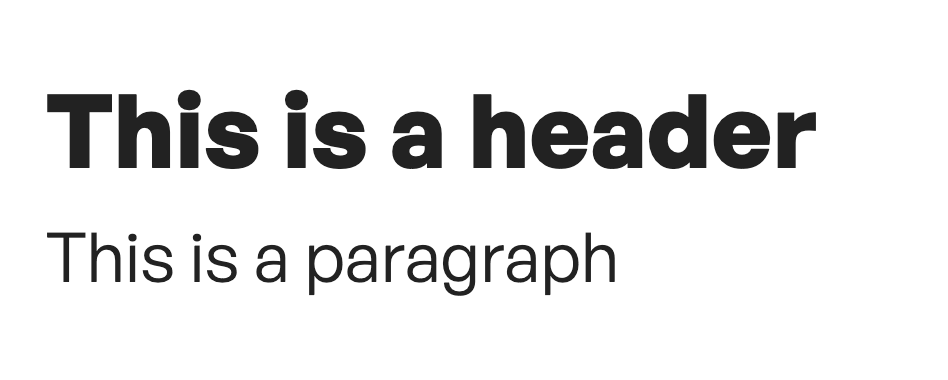Limitations of Scoped CSS
I was really excited about Scoped CSS a couple of years back when frameworks like React and Vue introduced them.
As I began trying Scoped CSS out for myself, I was disappointed and I felt it didn’t live up to its hype.
But after more tries, I’m happy to announce that Scoped CSS is indeed useful. You only have to realize what its limitations are and what to do when you face these limitations.
I’m not talking about the native CSS :scope
Before you continue further, I want to make sure we’re talking about the same thing.
In this article, I’m talking about Scoped CSS that can be found in major frameworks like React, Vue, Svelte, and Astro.
I’m not talking about the native CSS :scope. You can find out more about that here.
The premise of Scoped CSS
Scoped CSS was one of the biggest features that frameworks provided us with. It promises to restrict the scope of your CSS, so your CSS would not leak into other components.
The limitations of Scoped CSS are…
- You cannot style children components
- You cannot style slot content
Now let’s see what I mean by these limitations.
You cannot style children components
From my experience, Scoped CSS in all frameworks behaves in the same manner. So I’m going to use Svelte here to illustrate my point.
Let’s say I imported a SVG component and I’d like to style the SVG from a Menu component.
<script> import SVG from './SVG.svelte'</script>
<div class="Menu"> <SVG /> <span>Menu</span></div>The SVG component simply contains the SVG and nothing more.
<!-- SVG component --><svg>...</svg>If I try to style the SVG from the Menu component, the styles will not be applied.
<!-- Menu component --><style> .Menu svg path { stroke: red; }</style>
And I’m forced to use the global or the global selector to style this SVG.
<!-- Global attribute --><style global> .Menu svg path { fill: red; }</style>
<!-- Global selector --><style> :global(.Menu svg path) { fill: red; }</style>
The Global Attribute
The global attribute negates scoped CSS and allows the entire style block to act like Normal CSS.
<style global> .Menu svg path { fill: red; }</style>Using the global attribute isn’t a great practice because you might as well write Normal CSS instead.
By the way, if you use Astro, the global attribute is a directive and not an attribute.
<style is:global> …</style>The Global Selector
The :global() selector allows you to expose the values wrapped inside it to the global scope.
<style> :global(.Menu svg path) { fill: red; }</style>If you want to keep .Menu in the local scope, you can use :global only on the rest of the selectors.
<style> .Menu :global(svg path) { fill: red; }</style>This is nice.
But there’s a huge problem.
The global selector cannot be used in the middle of the selector chain. So this doesn’t work.
<style> /* These don’t work */ .Menu :global(svg) path { … }</style>Because the global selector cannot be used in the middle of the selector chain, nesting doesn’t work as well.
<style lang="“scss”"> /* This doesn’t work */ .Menu :global(svg) { path { … } }</style>This gives Scoped CSS a big minus point in my world.
You cannot style slot content
Scoped CSS is also limited when you have to style slot content.
For this, let’s say we have an <Article> component and we are going to pass the contents through a <slot>.
<article class="Article"> <slot /></article>We’ll use <Article> like this.
<script> import Article from './Article.svelte'</script>
<article> <h2>This is a header</h2> <p>This is a paragraph</p></article>If you try to style the slot content from Article with Scoped CSS, you’ll realize it doesn’t work.
<article class="Article"> <slot /></article>
<style> h2 { color: blue; } p { color: red; }</style>
You need to use the global attribute or the global selector instead.
Styling Slot Content
You can use global selectors or the global attribute to style slot content.
In this case, let’s go with global selectors.
Here’s how I would style the slot content.
<article class="Article"> <slot /></article>
<style lang="scss"> article { :global(h2) { color: blue; } :global(p) { color: red; } }</style>
When you use global selectors to style slot content, pay attention to these points:
One: global must be written for every selector you wish to target. If you have to use a large number of global selectors, it may be worthwhile to write normal CSS instead:
Two: :global should come AFTER a selector (article in this case). If :global doesn’t come after a selector, you’ll be writing CSS into the global scope which is probably not what you want.
If you did what I just mentioned, your selectors should look somewhat like this:

Wrapping Up
Scoped CSS is a great feature.
Scoped CSS can be frustrating to use when you don’t know what its limitations are.
Once you know the limitations, you will be able to use Scoped CSS to its fullest potential.
Further Reading
- Camelcase CSS — this explains why I used title case for CSS classes.
- How Svelte scopes component styles
- Scoped Styles in Astro
- Native CSS
:scope
